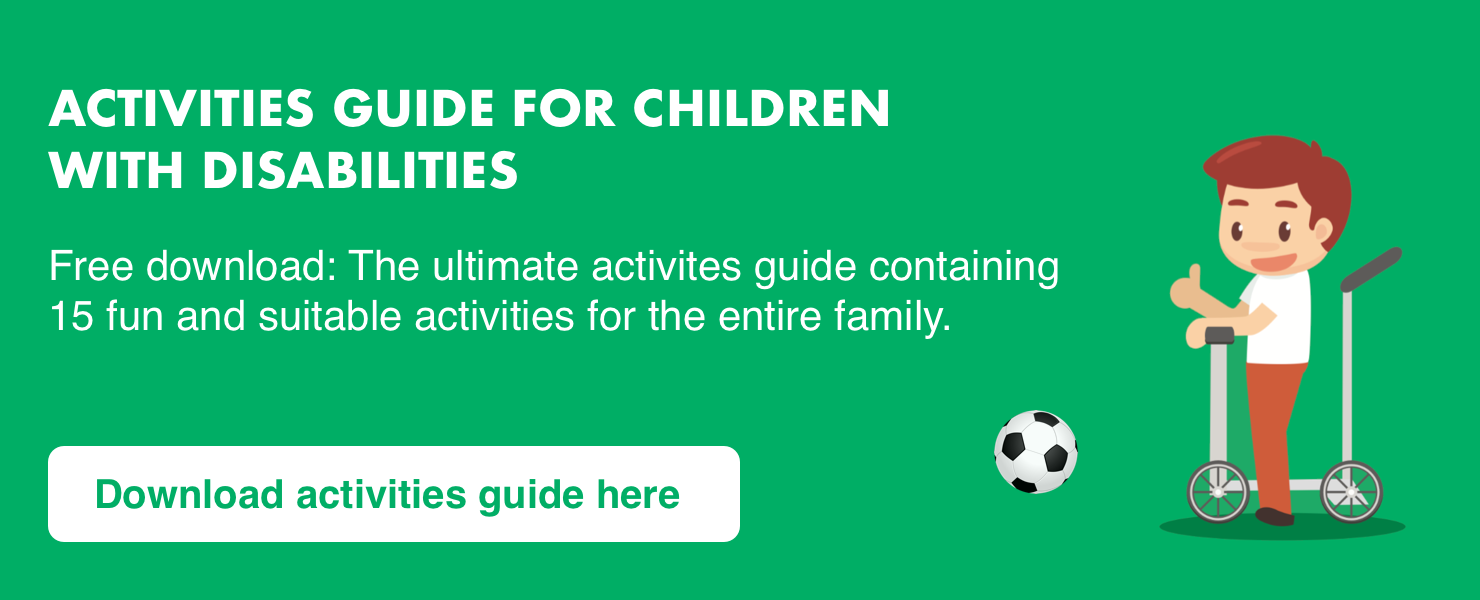/what-effect-does-innowalk-have-on-children-with-gross-motor-impairment.jpg?width=640&height=363&name=what-effect-does-innowalk-have-on-children-with-gross-motor-impairment.jpg)
Oct 13, 2016How to bond through activities when your child has CP

Back to Blog Overview
Every parent enjoy watching their children smile while being active or learning a new skill. One of the greatest things to experience as a parent is having fun playing with your kid and sharing a laugh. And there is no reason why you can't experience this joy when your child has CP.
Why is bonding activity so important?
For a start, physical activity of all kinds is a vital part of childhood. It makes the muscles and lungs work. In turn, shared activities help children with CP to acquire better physical health and greater emotional health, well-being and resilience.
Moreover, shared activity enables socialisation – the sense of being part of the wider world. It improves cognitive function too: even the development of a sense of self, the big question of "who am I?". Physical activity is an important part of being a kid, and everyone needs to experience the joy of accomplishment, making new friends and bonding with their family.
So while it can seem challenging to bond with your child through sports and activities, it’s important to have a go – not only for the child, who gains a sense of accomplishment but for the whole family as well.
Fun activities
So, which fun activities can you take part in? Of course, all children are unique and there are different levels of CP. Some activities may need to be tailored to your child’s level of functioning. We have created some general suggestions for activities that can be modified for children with disabilities:
The seated obstacle course (inside)
Seat the participants at the table and give them each a straw, three dried peas, a bottle of water and their favourite snack. You should line the dried peas in a row in front of each player. The aim is to blow each pea off the table using the straw, one after the other, then drink the water, before eating the snack.
Go shopping
Particularly with younger children, let them put items in the basket and help choose groceries. Simple, but important.
Wheelchair Basketball
One of the most exciting sports in the Paralympics, this is also one of the most popular participation sports for people with special needs. The scoring and rules are pretty well the same as orthodox basketball.
Go camping
There are special campsites for children with disabilities. But camping with the family is a great way of having a simple, safe adventure, and it’s easy to access.
Non-directed play
So-called "non-directed play" such as drawing or stringing beads, can help children develop ability and flexibility – and it’s great for mindfulness too.
Animal activity
Children love animals, and many people think they’re great for their emotional, social and behavioural functioning. Try a zoo (with ethics) or a functioning farm, which are increasingly open to visitors.
Boy Scout and Girl Guides
Scouting organisations are normally very inclusive. Try a local scout or guide group, bearing in mind that parents may not be involved.
A few things to remember when practising these activities:
- Start at the right level. It’s important to build self-esteem and a feeling of accomplishment – but don’t throw all your hopes into the ring, and push your child into play that they might not feel comfortable with. The pace should be slow and incremental. Your main goal is to create positive feelings of a social activity and feelings of development and mastery.
- At the same time, bear in mind that the earlier the bonding activity, the better the prognosis for both child development and parental anxiety.
- Invite other children. If your child is comfortable, invite other children to play with you, including siblings, classmates and neighbours.
- If you feel "locked out" of the game that children are playing, that could be a good thing. You’re the parent – sometimes it’s meant to be that way.
Looking for more activities? Check out our guide below!

Jens Kleine is a physiotherapist with many years of sales experience within assistive device technology across several European countries. He is very focused on users’ needs and dedicated in finding innovative solutions. Today, Jens has a product manager role working closely with both external clinicians, the salesforce and our R&D team. Always searching for solutions that bring movement to the people that need it most.


